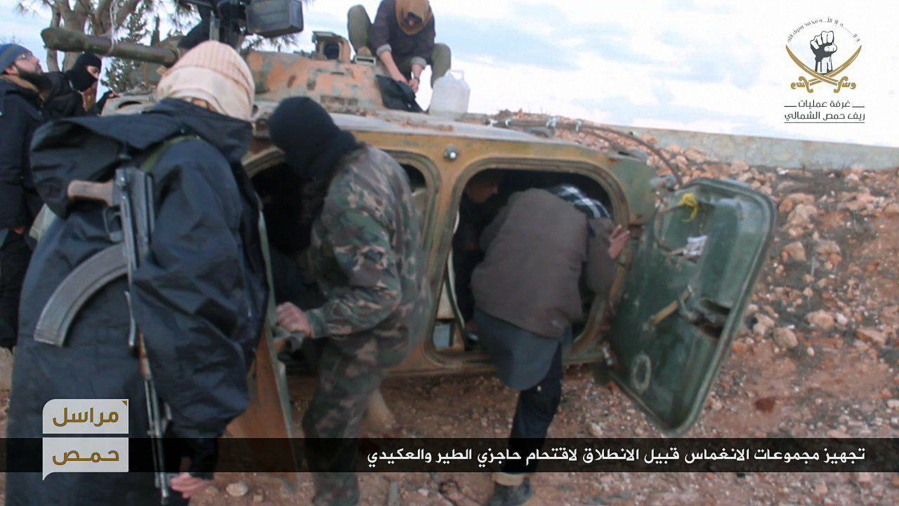BEIRUT — Syria’s fronts are on fire despite a cease-fire reached in December between the rebels and the government.
Though the two sides sat face-to-face in the Kazakh capital of Astana a month later, the government has pressed offensives against rebels around the capital, Damascus, and recently escalated its air campaigns in Homs and Idlib.
The war’s January toll — some 2,000 dead, about a third of them civilians, according to the Britain-based Syrian Observatory for Human Rights monitoring group — is the lowest it has been in four years. But that may be because the government wrapped up operations for Aleppo, the country’s largest city, last year.
Rebels struck at government positions in Hama province, though they have been mostly occupied by infighting in Idlib that calls into question the direction of their insurrection.
In the midst of all this, the Islamic State group has renewed its crusade for the remote eastern city of Deir el-Zour, while holding onto the culturally cherished site of Palmyra. At the same time, Turkish troops and the rival Syrian military are both closing in on the IS-held town of al-Bab, as U.S.-backed Kurdish forces bear down on the extremist’s self-declared capital, Raqqa.
Though small and out of the way, al-Bab is shaping up to be the weather vane for the rest of the conflict as the U.N. plans to convene Syria peace talks in Geneva on Feb. 20.
The government and rebels have converged on the town with clashes breaking out between the two sides for the first time on Thursday. Separately, a Russian airstrike killed three Turkish troops in what Russia said was an accident. It is now up to Turkey, Russia and Iran to demonstrate whether they can mediate a stable outcome for the town, or whether the front will dissolve into open warfare. Turkey is backing the rebels and has deployed several thousand troops to fight the Islamic State in al-Bab, while Russia and Iran support the government’s side.
Here’s a look at the fighting around Syria:
• DAMASCUS: Despite a rebel ultimatum delivered in Astana against further aggression around the capital, Syrian government forces along with Lebanon’s Hezbollah militant group pressed on with an offensive against rebels holding Damascus’s primary water source, and defeated them one week later. About 2,000 rebels, opposition activists and their families chose exile from the Barada valley rather than remaining under government authority.
This has become the hallmark of the government’s strategy — to squeeze its opponents through siege then offer them exile. Hundreds of thousands have fled their homes from bombardment across the country, with thousands more fleeing to Idlib province instead of submitting to government rule. Opponents call the strategy “forced displacement.”
Government forces have also intensified their assault on the eastern Ghouta region outside Damascus. Home to some 400,000 people, the area has hardly seen a day without fighting since the rebels expelled the government in 2012. The government justifies its attacks, saying those areas include fighters from the al-Qaida branch in Syria, although the rebels deny that.
• IDLIB: This province in northwestern Syria is now almost entirely under rebel control and has been overwhelmed by hundreds of thousands of people displaced by fighting.
But it is hardly safe. Multinational aircraft are constantly raiding the province, striking al-Qaida-linked rebels as well as civilian positions. U.S. coalition aircraft are believed to have killed more than 100 al-Qaida-linked fighters on the last day of Barack Obama’s presidency, according to the Pentagon, while government or Russian aircraft are believed to be behind a string of raids on the provincial capital, also called Idlib, that killed at least 26 civilians and more than a dozen militants earlier this week, according to the Observatory.
Rebels, meanwhile, are fighting one another in the province as they divide into competing camps over whether to engage in the diplomatic process in Geneva and Kazakhstan. On the one side are groups aligned with the al-Qaida-linked affiliate, Fatah al-Sham, while on the other are an array of Western- and Turkish-backed rebels, led by the ultraconservative Ahrar al-Sham.



